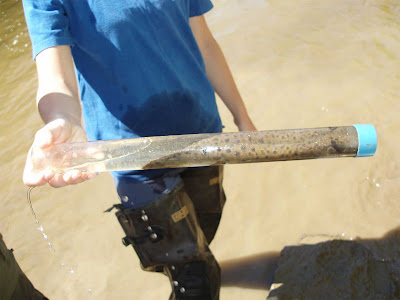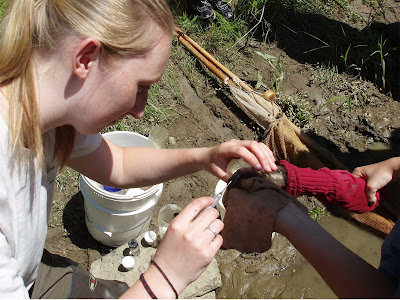The Future Scientists did more water quality sampling near the Grand River Terraces in Ashtabula County. This is a site that has not been surveyed in years due to difficulty of terrain. However, FS courageously braved the challenging landscape, reaching the designated testing location to do a fine job of collecting data. On the way back, some of the students chose to take the low road rather than the high road.

Note to future Future Scientists: follow the path that Jeff takes if you'd like to keep your underwear dry.
 Seining for salamanders.
Seining for salamanders. Checking the haul.
Checking the haul. Dr. Matson shows off a large crayfish.
Dr. Matson shows off a large crayfish. Mudpuppy! The Future Scientists were extremely fortunate to witness the only adult that was found the whole day.
Mudpuppy! The Future Scientists were extremely fortunate to witness the only adult that was found the whole day. Mudpuppy in a tube. A science tube.
Mudpuppy in a tube. A science tube. Injecting a tracking marker into the mudpuppy. Hence the science tube.
Injecting a tracking marker into the mudpuppy. Hence the science tube. One nest of mudpuppy larvae was also found. Here you can see the yolk sac on the ventral side of one of the salamander babies.
One nest of mudpuppy larvae was also found. Here you can see the yolk sac on the ventral side of one of the salamander babies.























